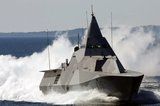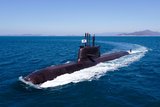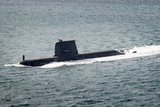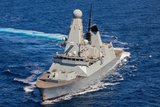Anti-drone directed energy weapons continue to evolve at sea
USS Portland downed a test drone via a solid state laser system in 2020. (Photo: Jonathan Word/US Navy)
As drones continue to emerge as a major factor in modern war theatres in Europe and the Middle East, attention to their effects have often focused on air and land combat.
Azerbaijan’s Israeli-made loitering munition drones and Turkish-made Bayraktar TB2 attack drones proved decisive, for example, in destroying Armenian and Nagorno-Karabakh tank and air defence units on land during the Second Nagorno-Karabakh War between the two sides in 2020.
Drones have also caused a paradigm shift in conflict at sea. The Russian Black Sea fleet has been marginalised during Russia’s conflict with Ukraine since 2022 by Ukrainian naval drone warfare,
Already have an account? Log in
Want to keep reading this article?
More from Naval Warfare
-
![Is South Korea finally being taken seriously for Western submarine programmes?]()
Is South Korea finally being taken seriously for Western submarine programmes?
South Korean shipbuilders are beginning to make their mark beyond Asia, competing for major North American and European submarine programmes and becoming serious contenders on a global scale.
-
![AUKUS Pillar 2 could narrow focus to “four key areas” says UK official]()
AUKUS Pillar 2 could narrow focus to “four key areas” says UK official
Few concrete ideas have emerged so far on which “advanced capabilities” will be brought forward under Pillar 2 of the AUKUS partnership, but the Pentagon’s review of the programme could bring more clarity.
-
![US Coast Guard prepares procurement of next-gen surface search radar]()
US Coast Guard prepares procurement of next-gen surface search radar
The NXSSR will replace five in-service capabilities and be the US Coast Guard’s primary collision avoidance system.
-
![MBDA-led DragonFire’s latest trials move the LDEW system closer to UK Navy integration]()
MBDA-led DragonFire’s latest trials move the LDEW system closer to UK Navy integration
The DragonFire lines up with other European laser-directed energy weapons being developed in collaboration with MBDA.























